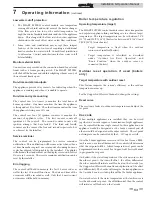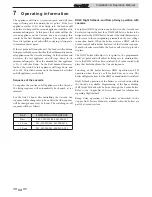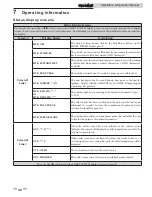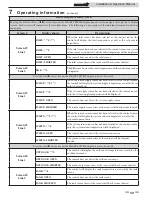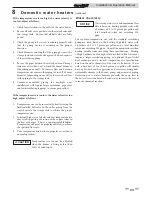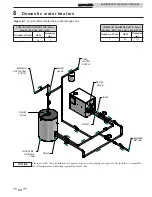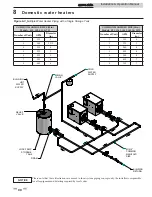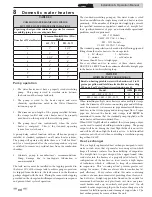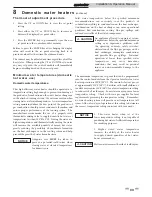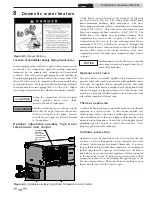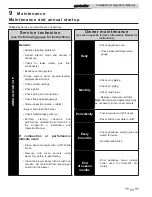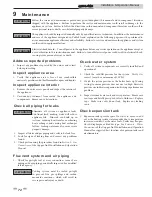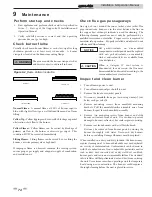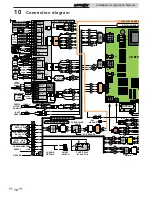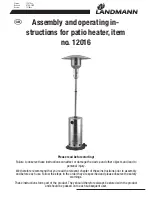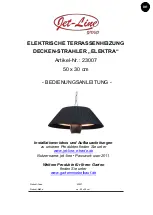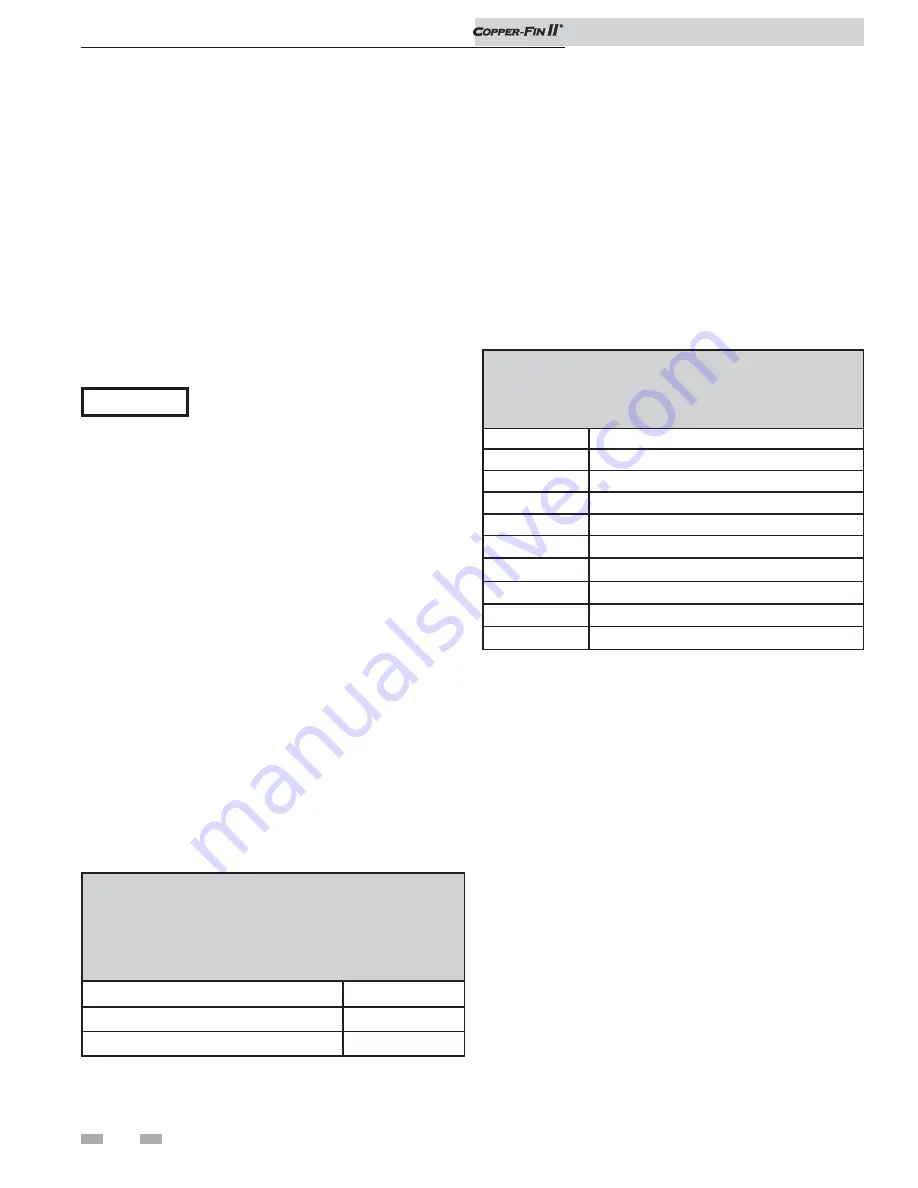
Installation & Operation Manual
62
8
Domestic water heaters
This section applies only to those appliances used to supply
domestic hot water, installed with a storage tank(s). A circulating
pump MUST be installed in the piping assembly to the storage
tank and valves used to control water velocity through the
appliance. Proper water velocity is important for correct
operation of your water heater.
This section contains specific instructions for those appliances
used to supply domestic hot water. All warnings, cautions,
notes and instructions in the general installation and operation
sections apply to these instructions. Water heaters are designed
for installation with a storage tank. The operation of the
circulating pump, proper sizing of the piping between the tank
and heater and the control of water velocity, as explained in
this section, are important for correct operation of your water
heater.
NOTICE
To ensure proper velocity through the heat
exchanger, it is necessary to regulate the
temperature rise across the heat exchanger
from inlet to outlet. This must be done
on initial installation and periodically
rechecked. With the correct temperature
rise across the heat exchanger when the
water heater is firing at 100% of rated
input, you may be assured of the proper
velocity in the tubes. This will yield long life
and economical operation from your water
heater.
Excessive lime/scale build-up in the heat
exchanger tubes is a result of restricted flow
and too little velocity in the tubes. Excessive
pitting or erosion in the tube is caused by
high water flow and too much velocity
through the tubes. Care should be taken
to measure temperature rise and maintain
velocity as follows:
Initial set-up of maximum water flow
On initial start-up of the Copper-fin II the maximum water flow
through the heat exchanger must be manually set before normal
operation begins.
If higher flow rates are required through the water heater, an
optional Cupro Nickel heat exchanger is available. Consult the
factory for specific application requirements.
The heat exchanger is capable of operating within the design
flow rates required for the water heater, storage tank(s), and
connecting piping. Erosion of the finned copper tubes may
occur if the flow rate exceeds the maximum allowable flow rate
through the water heater. The maximum flow rate through the
water heater must be adjusted. Maximum flow on Models 402
- 752 is 55 GPM and 90 GPM on Models 992 - 2072. Flow rate
can be determined by measuring the temperature rise through
the water heater when it is firing at full rate input.
1. The pump must run continuously when the burner is
firing.
2. With the pump running and the burner in the water heater
in the off cycle, the inlet water temperature and outlet water
temperature readings on the Operator Interface should read
approximately the same temperatures. Water Temperature
Rise on the Operator Interface should read near zero.
3. Turn the water heater on and allow time for the temperature
to stabilize. The Service Mode can be used to force the water
heater to run at full fire. See the Copper-fin II Service Manual
for a detailed explanation of the Service Mode. Check the
water temperature rise in the Operator Interface when the
burner is firing at 100% of rated input.
4. Compare the water temperature rise in the Operator
Interface with the required temperature rise. Should
adjustment be needed, proceed as follows.
TABLE - 8A
MAXIMUM WATER FLOW
CAUTION: The maximum flow rate through a Copper-fin II
water heater with a copper heat exchanger must be set to provide
and not exceed the following flow:
Model
Maximum Flow
402, 502, 652, and 752
55 GPM
992, 1262, 1442, 1802, and 2072
90 GPM
TABLE - 8B
TEMPERATURE RISE AT FULL RATE FIRE
55 AND 90 GPM FLOW
Model
Temperature Rise °F
402
12
502
15
652
20
752
23
992
19
1262
24
1442
27
1802
34
2072
39






